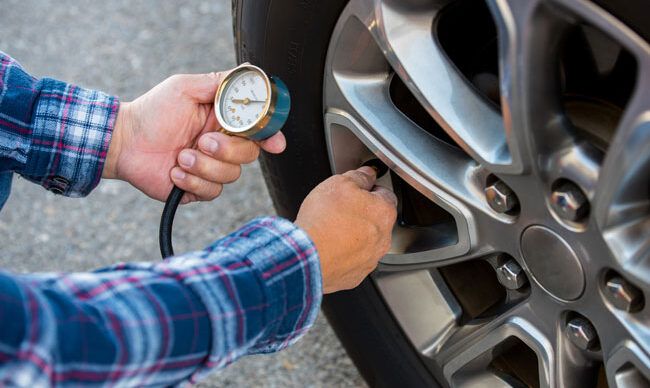
Fleet management is no easy task, yet it is a critical aspect of many businesses. Companies that provide transportation, delivery, construction and other services rely on fleet vehicles. This means they are also dependent upon fuel. For many of these companies, gas and diesel are the largest line items in their budget.
Regularly-checked and maintained vehicles tend to have a longer service life and better performance.
With fuel being such a huge cost, fleet managers must take advantage of any chance to reduce fuel spend. For many business owners and managers, this begins with fleet cards. Fleet fuel cards offer discounts or fuel rebates, help track financial and vehicle data and control costs through purchase controls or spending limits. They even automate fuel expense reporting. Another aspect of fleet management that dramatically impacts fuel consumption (not to mention safety and vehicle longevity) is the vehicle check.
The Importance of Fleet Vehicle Checks
Businesses may approach vehicle checks differently, but most of what you will find on a checklist is universal. A fleet-dependent company typically has daily, weekly and monthly checks.
Before we discuss the specifics of daily, weekly and monthly checklists, let’s consider the benefits of following them and how they impact fleet management.
Benefits of Vehicle Checklists
Enhancing Safety
The safety of drivers, passengers and other road users is critical. Regular vehicle inspections help identify potential safety issues before they lead to accidents or failures. By following a standardized checklist, fleet managers can ensure all necessary checks are completed.
Improving Vehicle Performance and Longevity
Regularly-checked and maintained vehicles tend to have a longer service life and better performance. Because of their improved performance, these vehicles tend to be more fuel efficient, require fewer repairs and have less downtime, leading to more productivity from drivers. Essentially, they cost less to own and provide a more consistent revenue stream. Both of these factors can increase your company’s cash flow.
Ensuring Compliance
Many states, regions or service lines have legal requirements regarding vehicle maintenance and safety standards. Using fleet vehicle checklists helps ensure compliance with these regulations, avoiding fines and possible interruptions to business operations.
Streamlining Maintenance Schedules
Checklists help in planning and executing maintenance schedules. They provide a clear understanding of what needs to be addressed and when. These checklists can also help fleet managers allocate resources more efficiently.
Daily, Weekly and Monthly Fleet Vehicle Checklists

Creating a routine that employees can follow regularly ensures that vehicles are consistently maintained. Here are some examples of daily, weekly and monthly fleet vehicle checklists that can be tailored to specific fleet needs.
Daily Checklist
Daily checklists are the frontline defense against potential issues that can compromise vehicle safety and performance. A quick but thorough inspection helps catch any immediate concerns before a vehicle hits the road.
- Visual inspection: Check for visible damage to the vehicle, including dents or broken lights. Ensure mirrors are properly adjusted and clean for optimal visibility.
- Tire condition and pressure: Ensure tires are in good condition and properly inflated. Check tire pressure and tread depth. Look for any signs of damage or wear such as bulges, cuts or uneven wear patterns.
- Fluid levels: Check levels of essential fluids, including oil, coolant, brake fluid and windshield wiper fluid. Fill up as necessary.
- Lights and signals: Verify headlights, brake lights, and turn signals are functioning correctly. Replace any bulbs that are not working properly.
- Brake system: Test the brakes for responsiveness and unusual noises. Make sure there are no leaks in the brake lines.
- Windshield and wipers: Ensure the windshield is clean and free of cracks and that all wiper blades are free of tears.
- Documentation: Verify the vehicle has all necessary documentation, including insurance, registration and emergency contact information.
Weekly Checklist
A weekly checklist allows for a more thorough assessment of a vehicle’s condition. These inspections can help identify emerging issues requiring greater attention than those assessed during a daily vehicle check.
- Engine and transmission: Check for signs of leaks or unusual noises from the engine or transmission.
- Battery condition: Test the battery to ensure it’s holding a charge. Check the battery terminals for corrosion and ensure connections are tight. Replace as needed.
- Belts and hoses: Inspect belts and hoses for wear and replace if necessary.
- Steering: Visually inspect the steering system for any signs of wear or damage.
- Undercarriage: Asses the undercarriage for signs of leaks, damage or corrosion. Pay close attention to the exhaust system and suspension components. Address any leaks promptly to prevent damage to components and environmental contamination.
- Interior: Check the interior of the vehicle for cleanliness and functionality. Ensure all safety features, such as seat belts and airbags, are working/registering.
Monthly Checklist
Companies that perform monthly checklists often use them as a baseline to evaluate maintenance needs—especially companies with excessive monthly mileage.
- Engine performance: Conduct a diagnostic scan to check for any error codes or performance issues. Address any engine-related concerns, such as rough idling or decreased fuel efficiency.
- Brake fluid and cooling system: Check and top off brake fluid and coolant levels.
- Power steering fluid: Check the power steering fluid level and fill up if necessary.
- Air filter: Check the air filter and clean or replace if dirty.
- Tire rotation and alignment: Check tire alignment and rotate tires to promote even wear.
- Fuel system: Inspect the fuel system for leaks or damage. Clean or replace fuel filters as needed.
The Role of Fleet Cards in Vehicle Checks
Combining checklists with fleet card data and telematics provides a comprehensive view of vehicle performance and allows fleet managers to make more informed decisions about scheduling maintenance, vehicle downtime and fuel usage.
While most daily, weekly and monthly vehicle checks are conducted manually, some aspects can be automated with the use of fleet cards and telematics. Using a fuel card, you can keep a close eye on fuel efficiency, especially with real-time data. Introducing telematics to a fleet offers a host of data points that can be monitored in real time and from virtually anywhere. Such information includes tire pressure, oil pressure, engine performance, and more.
Combining checklists with fleet card data and telematics provides a comprehensive view of vehicle performance and allows fleet managers to make more informed decisions about scheduling maintenance, vehicle downtime and fuel usage.
Choose to Check
Incorporating daily, weekly and monthly checklists into your fleet management routine enhances safety, compliance and cost-effectiveness. Checklists serve as proactive tools for identifying and addressing potential issues before they escalate, ultimately contributing to the overall reliability and longevity of your fleet. Vehicle checks should be as integral to your fleet operations as your fuel card.